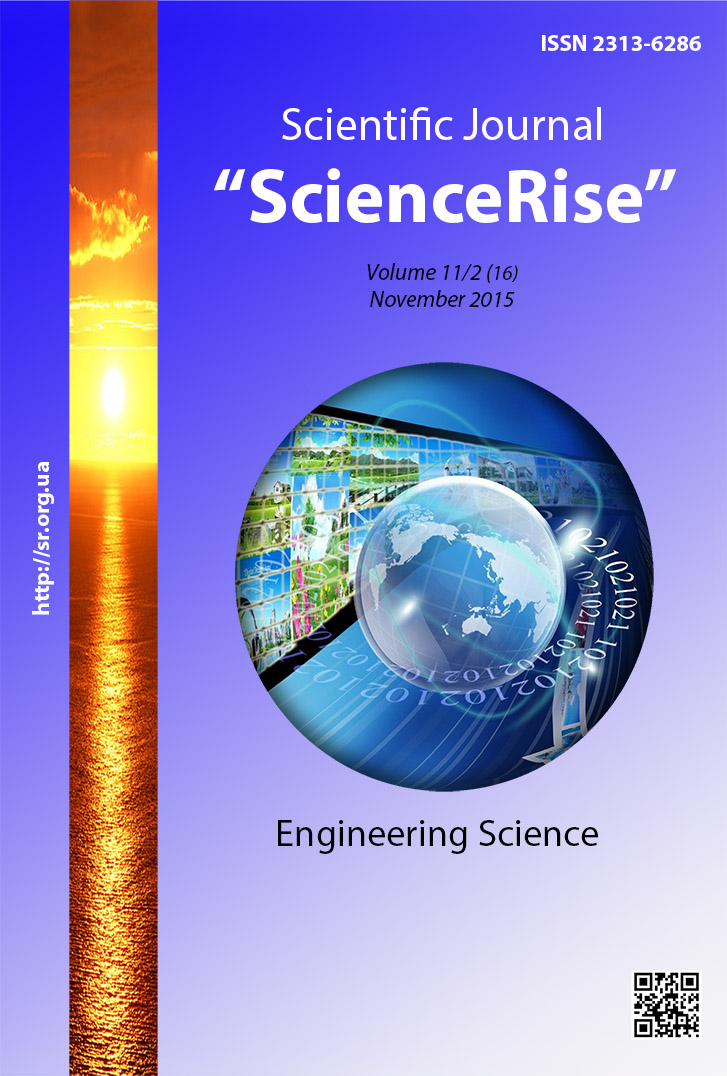Стеклосодержащие шлакопортландцементные материалы
DOI:
https://doi.org/10.15587/2313-8416.2015.54099Słowa kluczowe:
стеклопорошок, гранулированный доменный шлак, шлакопортландцемент, прочность при сжатии, пористость, математическое моделированиеAbstrakt
Исследовано влияние стеклопорошка на кинетику набора прочности материалов на основе шлакопортландцементная. В результате оптимизации получена область существования составов вяжущего вещества, ограниченная по оси Х1 от 25 до 55%, по оси Х2 от 5 до 7,5% и по оси Х3 значениями В/Ц от 0,243 до 0,33, позволяющая получать искусственный камень, характеризующийся прочностью при сжатии 30-106 МПа в промежутке 2-90 суток твердения, характеризующийся показателями пористости: 27,1% общей; 21,42 открытой и 5% закрытой
Bibliografia
Bazhenov, Y. M. (2005). Concrete Technology of the XXI century. Newresearch areas of building materials: materials reports Academic readings RAASN. Belgorod Univ BSTU.V.G. Shukhov, 9–19.
Pushkarevа, K. K., Gonchar, О. A., Pavlyuk, V. V., Bondarenko, О. P. (2008). The principles of composite construction quick-alkali portland slag cement. Resursoekonomni materials, constructions and buildings, 16, 82–90.
Pushkarevа, K. K., Bondarenko, О. P. (2008). Features production and prospects of concrete based on alkali portland slag cement. Stroytelnye materials and sanytarnaya technics, 29, 72–80.
Bondarenko, O. P. (2009). Quick-alkali portland slag cement and concrete on their basis. Kyiv, 21.
Pushkareva, K. K., Bondarenko, O. P. (2011). Technological features concrete production based on the alkali portland slag cement. Scientific Papers "Building structures", 74, Book 2, 116–122.
Bondarenko, O. P. (2012). Plastifying the alkali portland slag cement and concrete on their basis. Bulletin of the Odessa State Academy of Construction and Architecture, 48, Part 1, 41–45.
Moskalenko, O. A., Runova, R. F. (2015). The influence of additives on integrated mobility on shlakovmisnyh Portland cement concrete for monolithic construction. Resursoekonomni materials, structures, buildings and facilities, 30, 50–56.
Moskalenko, A. A. (2015). The influence of complex additives for concrete mobility based vysokonapovnenyh shlakovmisnyh Portland. Resursoekonomni materials, structures, buildings and facilities, 31, 330–336.
Steklobeton. Available at: http://stroivagon.ru/rastvoryi/steklobeton
Egorov, K. I., Mamina, N. A. (1998). Waste glass ecology, information, business. Building materials, 10, 33
Meyer, C. (2001). Recycled glass from waste material to valuable resource. Recycling and Reuse of glass Cullet: Proceedings of International Symposium. Dundee UK, 1–10.
Wihsmann, F. G., Forkel, K., Ploska, U. (1996). Glass-forming Silicate Minerals and their Derived Chemical Compositions. Chemie der Erde, 54, 414–420.
Ketov, A. A. (2003). Peculiar chemical and technological properties of glass cullet as the raw material for foamed insulation. Recycling and Reuse of Waste Materials: Proceedings of the International Symposium. Dundee UK, 695–704.
Zaitseva, E. I. (1998). Foamed insulation material on the basis of broken glass. Moscow, 22.
Orlova, L. A., Spiridonov, Yu. A. (2000). Building glass ceramic materials. Building materials, 6, 17–20.
Solomatov, V. I., Yerofeyev, V. T. (2000). Pattern formation and properties of composites based on glass breakage. Math. Universities. Building, 9, 16–22.
Krivenko, P. V., Pushkareva, E. K. (1993). The durability of concrete shlakoshchelochnyh. Kyiv: Budivelnik, 224.
##submission.downloads##
Opublikowane
Numer
Dział
Licencja
Copyright (c) 2015 Ольга Петровна Бондаренко, Сергей Григорьевич Гузий, Екатерина Дмитриевна Захарченко

Utwór dostępny jest na licencji Creative Commons Uznanie autorstwa 4.0 Międzynarodowe.
Our journal abides by the Creative Commons CC BY copyright rights and permissions for open access journals.
Authors, who are published in this journal, agree to the following conditions:
1. The authors reserve the right to authorship of the work and pass the first publication right of this work to the journal under the terms of a Creative Commons CC BY, which allows others to freely distribute the published research with the obligatory reference to the authors of the original work and the first publication of the work in this journal.
2. The authors have the right to conclude separate supplement agreements that relate to non-exclusive work distribution in the form in which it has been published by the journal (for example, to upload the work to the online storage of the journal or publish it as part of a monograph), provided that the reference to the first publication of the work in this journal is included.

